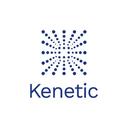
Terra
- #PoS
- #Binance BUSD
- 0.38398
- $70.14M
- $272.62MRank #228
- 709.98M
- Spot Markets
- Overview
- Market Data
Similar News
More Info- 06-04 10:00
The Binance World Championship Special: Trade $100 Each on Convert, Spot & Futures To Win...
- 06-03 22:00
MiCA Stablecoin Rules Implementation Announcement
- 06-03 10:15
Word of the Day: Test Your Knowledge on Life in Binance to Earn Binance Points...
- 05-31 15:00
Updates on Minimum Order Size for Spot and Margin Trading Pairs (2024-06-07)
- 05-30 21:28
Binance Futures Will Launch USDT-Margined TURBO Perpetual Contract With Up to 50x Leverage
Market Signal
More InfoCryptocurrency Calendar

NO DATA
What Is Terra Classic (LUNC)?
Terra is a [blockchain] protocol that uses fiat-pegged [stablecoins] to power price-stable global payments systems. According to its white paper, Terra combines the price stability and wide adoption of fiat currencies with the censorship-resistance of [Bitcoin] (BTC) and offers fast and affordable settlements.
Development on Terra began in January 2018, and its mainnet officially launched in April 2019. As of September 2021, it [offers] stablecoins pegged to the U.S. dollar, South Korean won, Mongolian tugrik and the International Monetary Fund's Special Drawing Rights basket of currencies — and it intends to roll out additional options.
On May 28, 2022, the genesis block of the new chain was launched to conduct future transactions under the name [Terra (LUNA)], and the original Terra Chain was rebranded as Terra Classic. The original native token — LUNA has also been renamed as LUNA Classic (LUNC). Moreover, all network [stablecoins] (UST, KRT, EUT) have been renamed to Terra Classic stablecoins (USTC, KRTC, EUTC). There will be no Terra stablecoins on the new chain.
There is a theory that the additional term “classic” is a reference to the [Ethereum] / [Ethereum Classic] split in 2017. According to CEO, Do Kwon, the collapse of UST in the spring of 2022 is the equivalent moment of the Ethereum’s [DAO] hack that took place in 2017.
What Is Luna Classic (LUNC)?
Luna Classic (LUNC) is the first native token of Terra blockchain released in August 2018. $LUNC existed before the launch of the new chain — now branded Terra (LUNA) — and works with the original code of the Terra ecosystem.
The main function that the native token performed was to absorb the price deviation of the [algorithmic stablecoin] — $UST. The price of the UST stablecoin was pegged to the US dollar by minting and burning UST tokens to balance the supply and demand of the coin. In May 2022, UST lost its peg and collapsed. The UST stablecoin algorithm created trillions of LUNA tokens, fell into a hyperinflationary spiral, and reduced the value of the original LUNA token by 99%.
Read: [The full breakdown of the Terra Crash]
What is the difference between Terra (LUNA) and Terra Classic (LUNC)?
Both versions of the token have the right to exist as a result of the implementation of a proposal called Terra Ecosystem Revival Plan 2. The essence of the plan is to split the current blockchain through [forking], which created a new chain in the ecosystem, preserving the previous version.
According to the recovery plan, the existing chain and token have been rebranded as Terra Classic. The new LUNA tokens were [airdropped] to existing holders of LUNA and UST before the depeg and subsequent crash occurred.
**Who Are the Founders of Terra Classic?**
Terra was founded in January 2018 by Daniel Shin and Do Kwon. The two [conceived] of the project as a way to drive the rapid adoption of blockchain technology and [cryptocurrency] through a focus on price stability and usability. Kwon took on the position of CEO of Terraform Labs, the company behind Terra.
Prior to developing Terra, Shin [co-founded] and headed Ticket Monster, otherwise known as TMON — a major South Korean e-commerce platform. He later [co-founded] Fast Track Asia, a startup incubator working with entrepreneurs to build fully functional companies.
Kwon previously founded and served as CEO of Anyfi, a startup providing decentralized wireless mesh networking solutions. He has also worked as a software engineer for Microsoft and Apple.
**What Makes Terra Classic Unique?**
Terra seeks to set itself apart through its use of fiat-pegged stablecoins, stating that it combines the borderless benefits of cryptocurrencies with the day-to-day price stability of fiat currencies. It keeps its one-to-one peg through an algorithm that automatically adjusts stablecoin supply based on its demand. It does so by incentivizing LUNA holders to swap LUNA and stablecoins at profitable exchange rates, as needed, to either expand or contract the stablecoin supply to match demand.
Terra has established a number of partnerships with payments platforms, particularly in the Asia-Pacific region. In July 2019, Terra [announced] a partnership with Chai, a South Korea-based mobile payments application, in which purchases made using the application on e-commerce platforms are processed via the Terra blockchain network. Each transaction is subject to (on average) a 2%–3% fee charged to the merchant.
In addition, Terra is supported by the Terra Alliance, a group of businesses and platforms advocating for the adoption of Terra. In February 2019, the company [announced] that e-commerce platforms from 10 different countries, representing a user base of 45 million and a gross merchandise value of $25 billion, were members of the alliance.
**Terra Classic's Role for UST**
The LUNA token and [UST] are mutually dependent, as the success of the [Terra ecosystem] is a function of the adoption of UST as a [stablecoin]. LUNA backs UST and is burned when demand for UST rises. Following upgrades like [Columbus-5], the supply of LUNA could become highly deflationary in the long run.
On the flip side, the value of LUNA can also decrease if UST is perceived as unstable. UST briefly lost its peg following the Wormhole hack, leading to a temporary price crash for LUNA.
In May 2022, a series of liquidations and bank runs from investors pulling their funds out saw UST Classic depeg to as low as $0.044. LUNA Classic crashed over 99% from over $80. UST Classic never recovered its peg.
Related Pages:
Read about [Terra (LUNA)] and [TerraClassicUSD (USTC)].
Read about [Tether (USDT)] and [USD Coin (USDC)].
What is a stablecoin? Learn more with our [educational portal].
[Check out] the top stablecoin tokens by market capitalization.
How Many Terra Classic (LUNC) Coins Are There in Circulation?
As of August 2022, the total supply of Terra Classic (LUNC) is 6.9T, and there are 6.5T LUNC in circulation.







